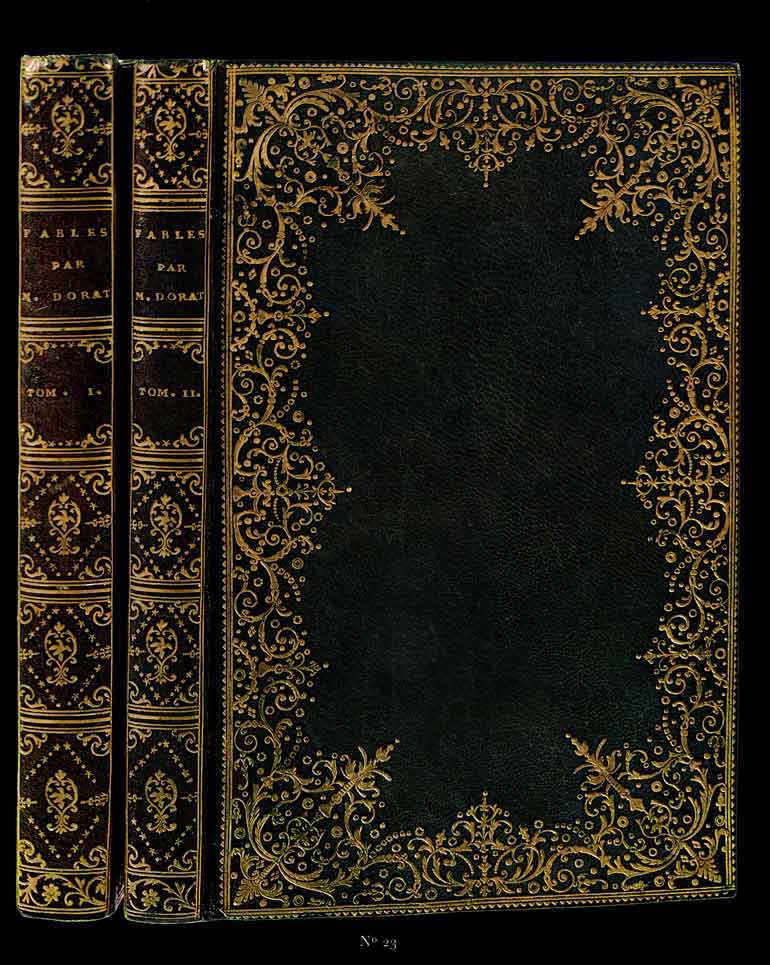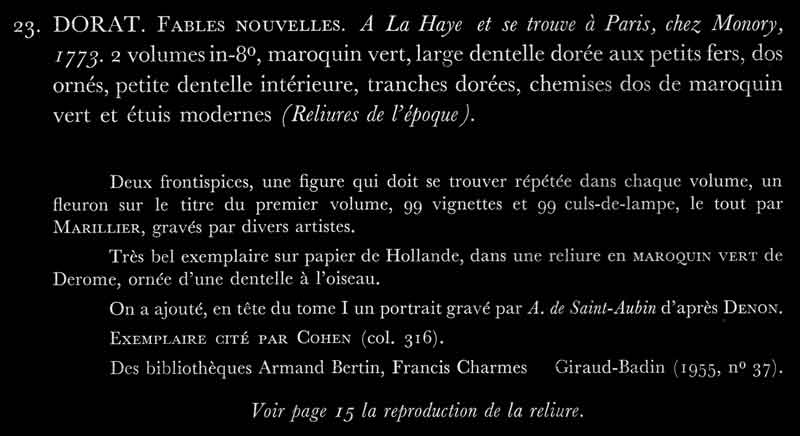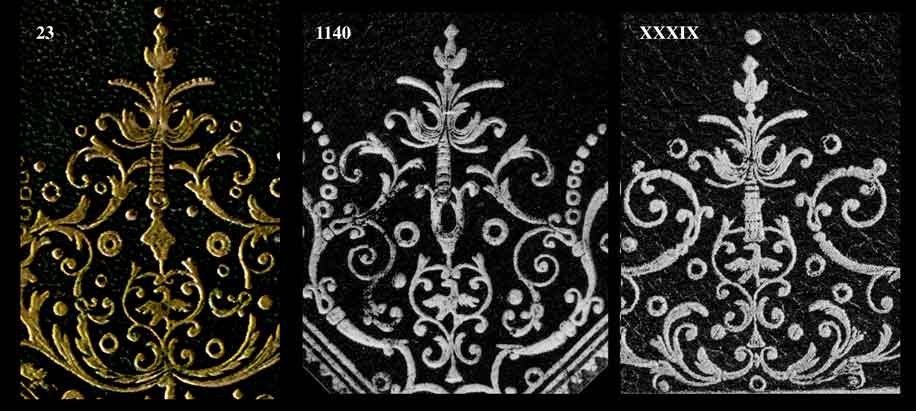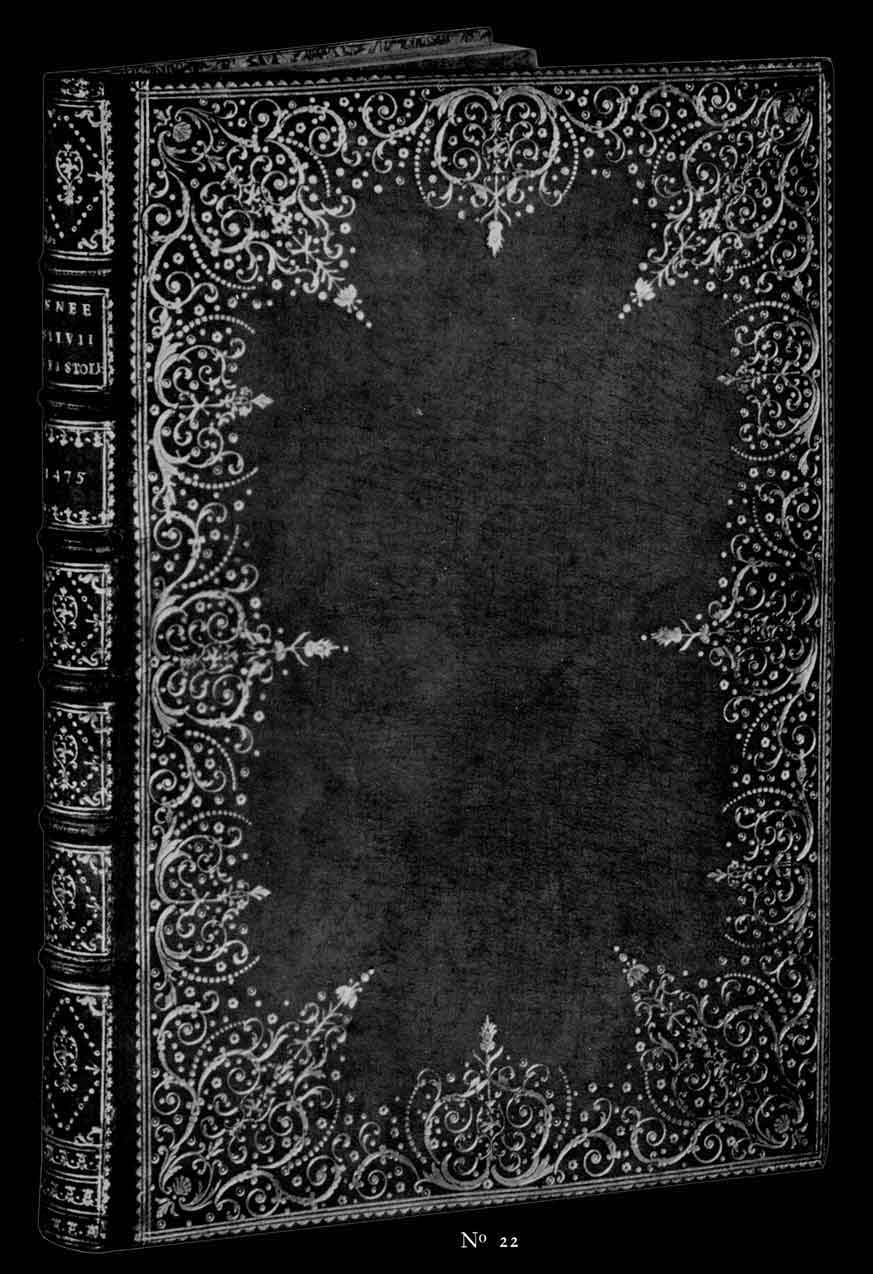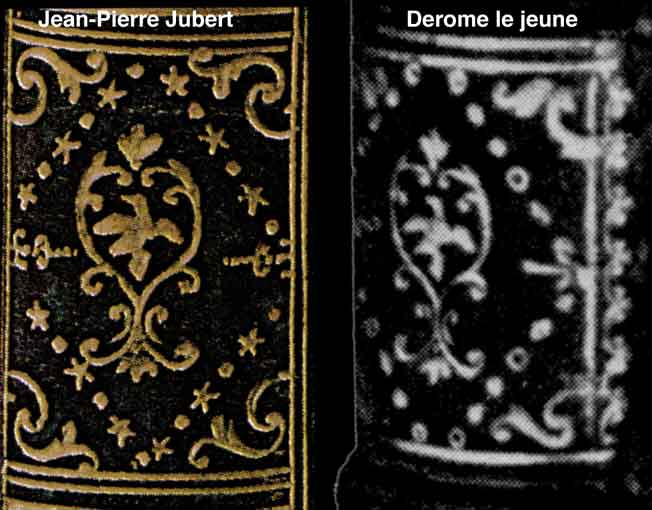|
The binding shown above is from Raphaël Esmerians 1972 catalogue, Volume I and is item number 22. Within the item information (reproduced above) we see that Esmerian has attributed this binding to Derome, Maroquin rouge, large dentelle à l'oiseau, dos ornée à l'oiseau..... (Derome le jeune, avec son étiquette). and notes that the étiquette of Derome is present. This is very likely to be an authentic Derome, and we see that there are many similar tools, and that they have been employed in a similar fashion. Jubert was obviously imitating the work of Derome and Dubuisson and copied their tools, but at the same time used tools which were distinctly his own. Also note that the bindings of item 23 and Jubert's signed binding, Rahir 1140, have been bound without the use of raised bands. This unusual change in the centuries old tradition was soon to become the way of the future, we see that by the early 19th century raised bands were no longer fashionable, Jubert appears to be one of the first to innovate in this direction. In Comparative Diagram 3, we see that Jubert used yet another fer à l'oiseau tool, he had at least 4 of these tools, this one imitates the style of Derome's tool very closely. By a stroke of good fortune I have found a second Derome fer à l'oiseau tool, on the spine of a Derome binding, Jubert's tool jj-4-2 looks identical but may be slightly different. We shall look at these tools on the next page.
|
